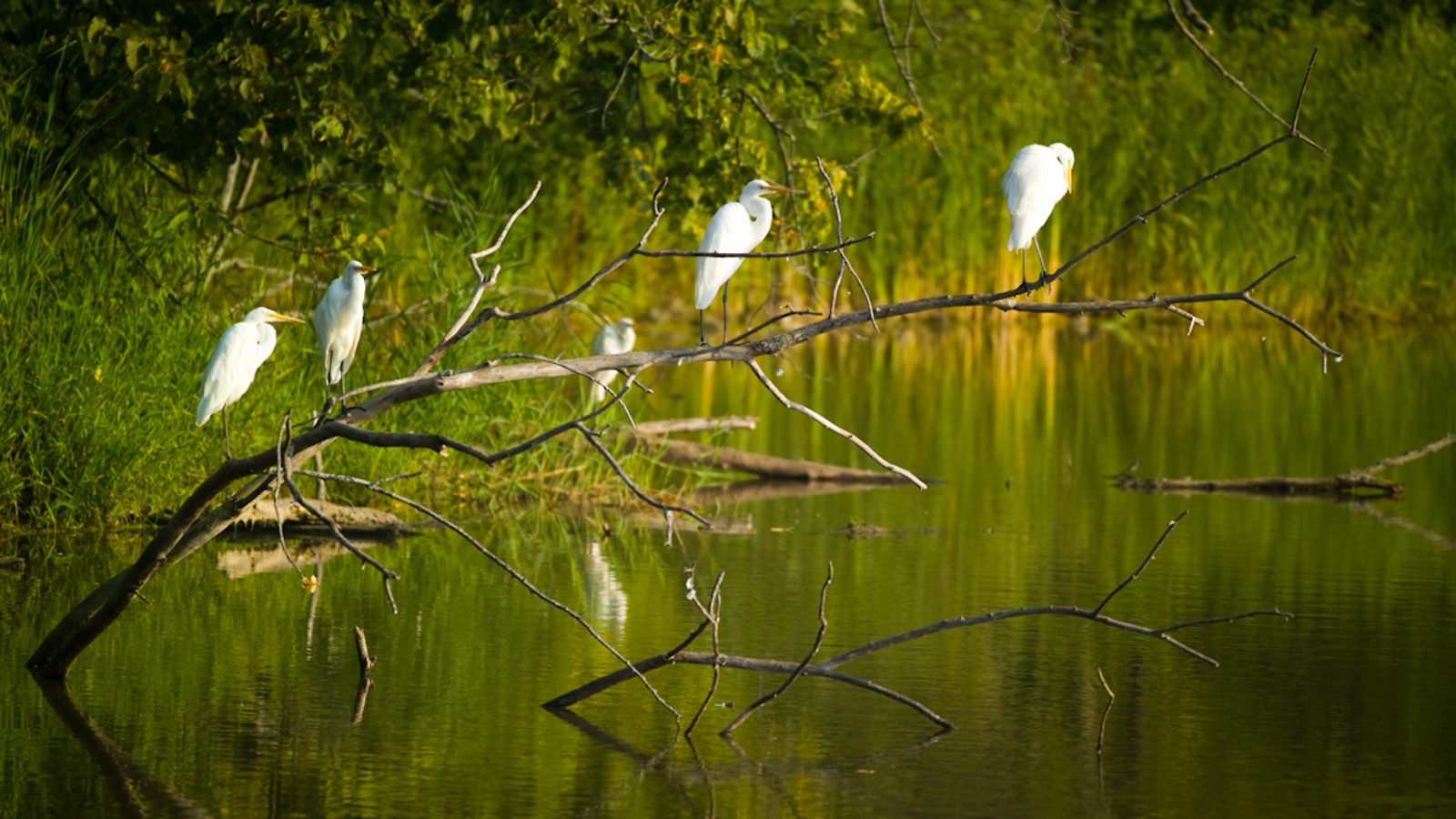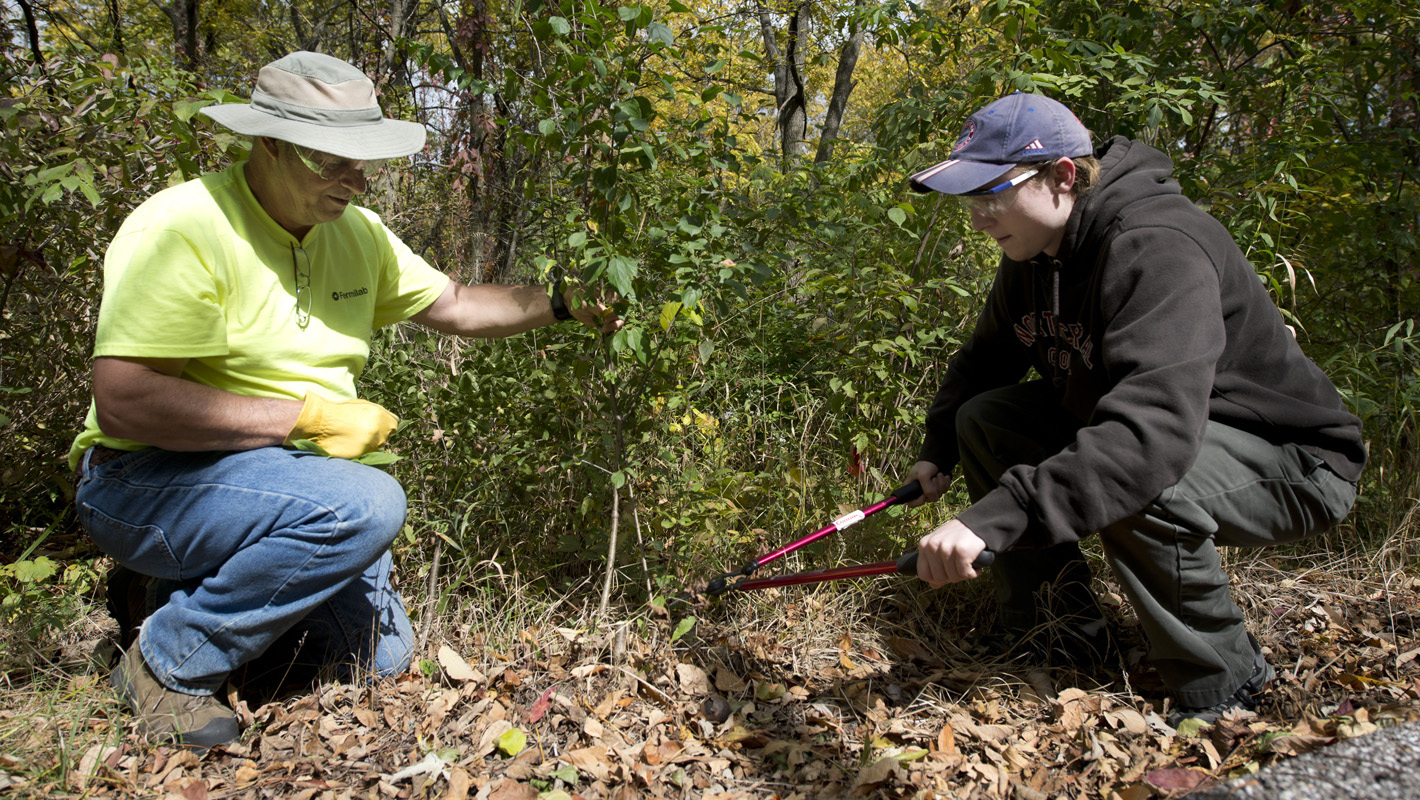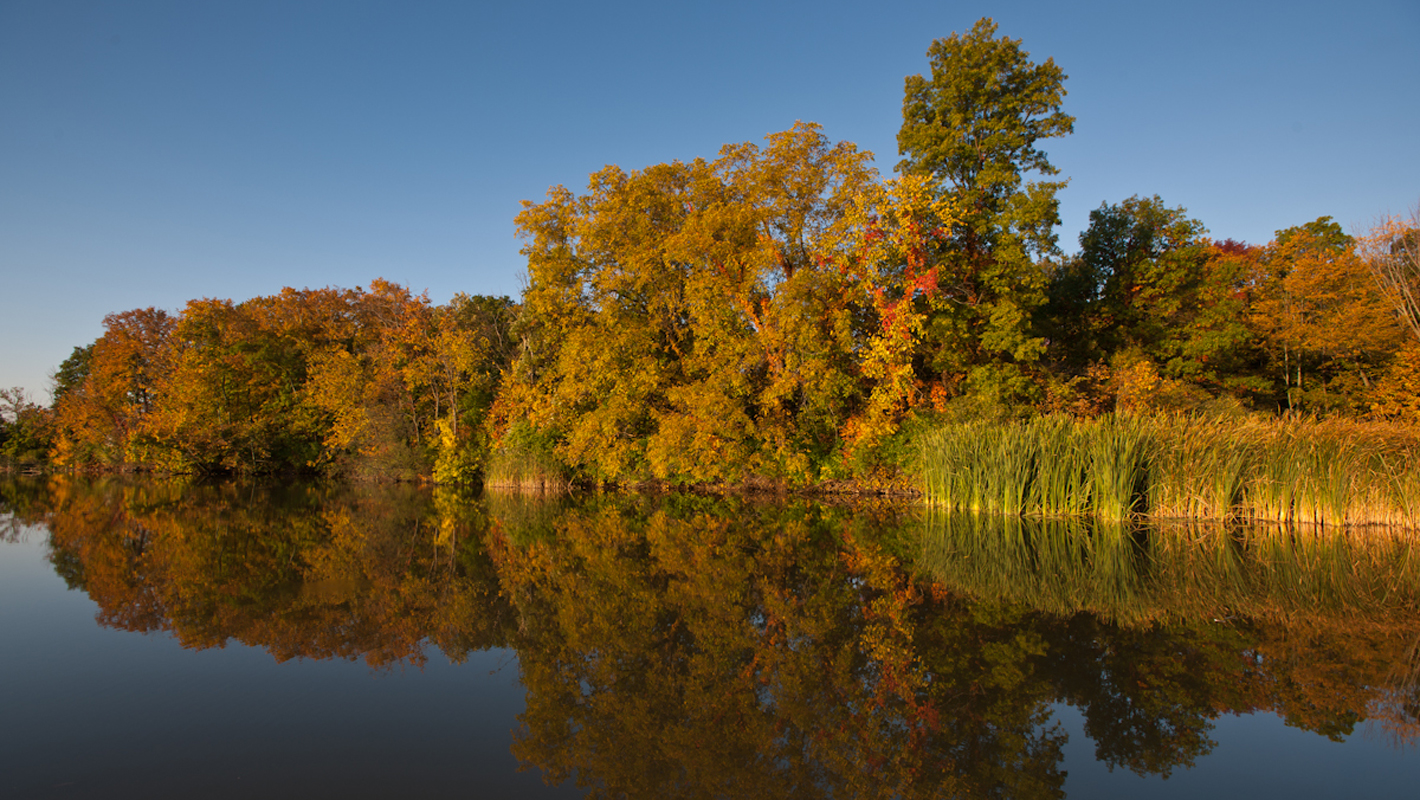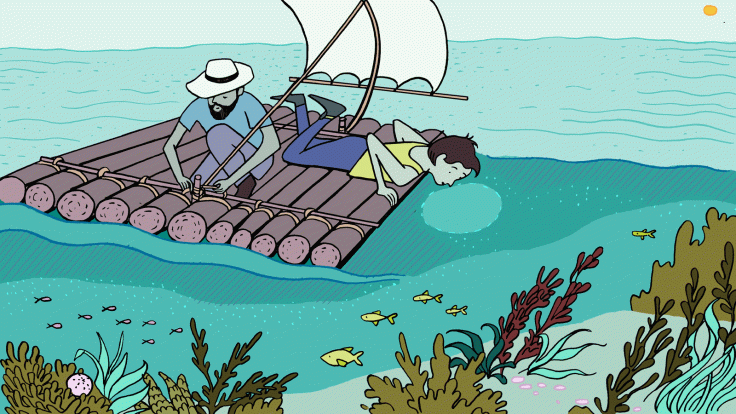Ryan Campbell, an ecologist with Fermilab’s Roads and Grounds Group, leans back in his office chair on a hot, humid Illinois summer morning. His gaze fixes on a large aerial photograph of the Fermilab property, on which he’d placed nametags on some of the large swaths of green fields and forests.
“See those names?” he says. “Those are the stewards—like this guy Johnny? This is a big area, but he’s taking care of it in terms of invasive species, biodiversity.” He pointed to another green region on the map. “Same with these folks over here and those two folks are working over there.”
Since its inception, Fermilab has been dedicated to environmental stewardship. The laboratory’s first director, Robert Wilson, and Northeastern Illinois University biologist Robert Betz began prairie restoration programs across the 6800-acre site, emphasizing the natural history of the Midwest. Today, much of that environmental work continues with the assistance of the private non-profit Fermilab Natural Areas.
Campbell, who is also the Field Project Manager of Fermilab Natural Areas, started a stewardship program late last year as a way to help manage the tallgrass prairie and woodlands present on the site. He assigned plots of land to interested employees and trained volunteers, matching them by the stewards’ skill sets and interests. The management work includes surveying plants, collecting seed and removing invasive species such as crown vetch, teasel and reed canary grass.
“By managing these plots, the stewards take pride in ownership,” Campbell says, comparing the steward program to an adopt-a-road venture.
Together with Fermilab Natural Areas President and Fermilab ecologist Rod Walton, Campbell began to attract people to adopt sections of Fermilab property to manage. One such person is Sue Sheehan, a Fermilab employee who is in charge of the docents at the Lederman Science Center. She and colleagues Lori Haseltine and Bob Shaw work on a plot close to the near detector for Fermilab’s MINOS experiment, which is designed to observe neutrino oscillations.
“We take surveys of the plot, just to get an idea of what’s living there,” Sheehan says. “It gives us a ballpark estimate.”
In a Fermilab Natural Areas newsletter, fellow steward Barb Kristen says she enjoys “being in the environment and seeing the changes that occur because of our work here.”
Sheehan has also taken gradeschool students out to the plot to do quadrat studies for more specific records of the plants living on her plot. In addition to surveys, Sheehan and several volunteers spray poison ivy, remove invasive willow and collect seeds of various prairie plants.
“To be a steward requires commitment from people,” Walton says. “There is quite a bit of interest—once we wrote up a description of it and got it out there, we had a flush of people who came in and said they wanted to be stewards.”
Campbell says he established the stewardship program as a continuation of Betz’s and Wilson’s efforts. Fermilab has continued to lead in prairie restorations, attracting attention from across the Midwestern United States.
“Fermilab has a long, rich history of science-based ecological restoration,” Campbell says. “We have to maintain that, especially with the help of stewards.”









